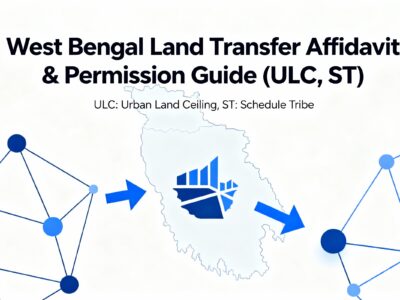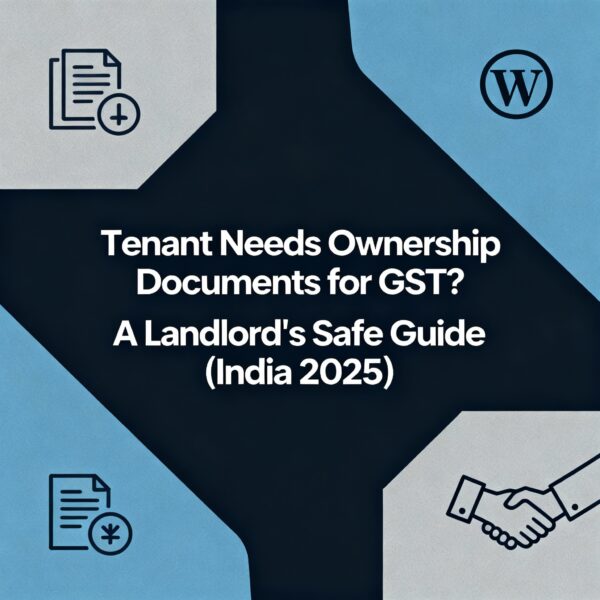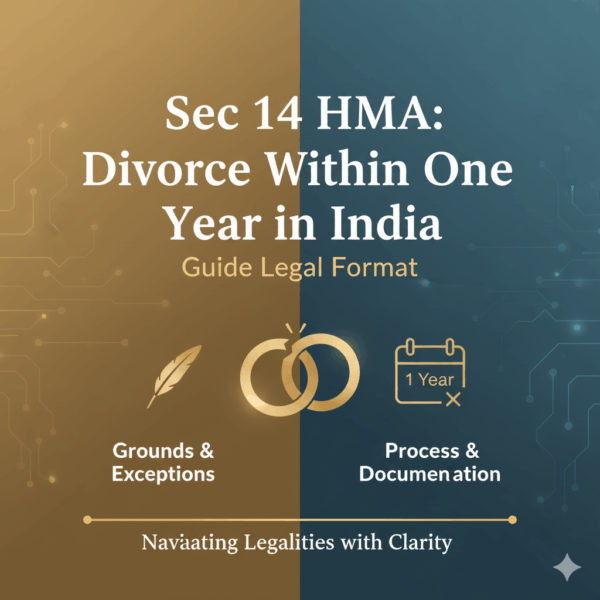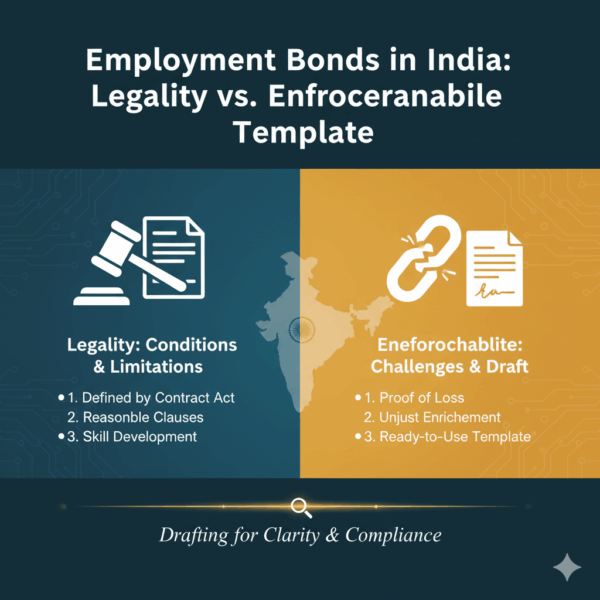This comprehensive guide provides a detailed overview of the Inner Line Permit (ILP) for Arunachal Pradesh, updated for 2025. We cover the complete legal framework, the different types of permits, and a step-by-step walkthrough of the online e-ILP application. This guide includes details on all documentation, fees, and practical compliance rules to ensure your travel is smooth and legally sound.
A Complete Guide to the Inner Line Permit (ILP) for Arunachal Pradesh
Navigating the legal framework, requirements, and application protocols for entry into the state.
Section I: Legal and Historical Context
The Inner Line Permit (ILP) is an official travel document required by non-native citizens to enter certain protected areas in India. For Arunachal Pradesh, this mandate originates from the Bengal Eastern Frontier Regulation, 1873 (BEFR). The BEFR was a British colonial-era regulation designed to separate “protected” hill areas from the plains, primarily to manage commercial interests and maintain tribal autonomy.
Post-independence, the Indian government adapted this regulation as a security and conservation measure. Its stated purpose today is twofold:
- Preservation of Indigenous Culture: To protect the distinct culture and traditions of the tribal communities in Arunachal Pradesh from unregulated outside influence.
- National Security: To monitor the movement of people in a state that shares sensitive international borders with Bhutan, China, and Myanmar.
It is critical to understand that the ILP is a mandatory entry requirement, not merely a travel advisory. Entry without a valid permit is a punishable offense under the BEFR.
The Socio-Political Context
The ILP regime is a subject of ongoing discussion. Proponents view it as an essential shield for tribal identity and land rights, preventing the demographic and cultural dilution seen in other states. They argue it is a necessary tool for balanced development, giving the state control over inward migration.
Opponents, however, sometimes raise concerns that the system can be a barrier to economic investment, tourism, and national integration. They point to the need for streamlined, transparent processes to ensure the permit system does not become a hurdle for legitimate travel and commerce. The state government seeks to balance these concerns, most notably through the introduction of the e-ILP portal to improve accessibility.
Section II: Types of Permits
1. Tourist ILP (Temporary)
This is the most common permit for visitors. It is issued for tourism purposes and has a defined validity period. It can be obtained for individual travel or for groups.
- Validity: Typically issued for a maximum of 14 days.
- Application: Can be applied for online (e-ILP) or offline.
- Key Requirement: Requires a valid Photo ID (like Aadhaar, Voter ID, or Passport) and details of a local sponsor/tour operator in Arunachal Pradesh.
2. Labour ILP (Provisional & Regular)
This permit is for skilled and unskilled workers employed by individuals, organizations, or government bodies within the state. It involves a more detailed verification process.
- Issuing Authority: Issued by the Labour Commissioner or district Labour & Employment Officers.
- Process: Requires a valid employment contract, police verification from the applicant’s permanent address, and a sponsorship letter from the local employer.
- Validity: Initially granted as a Provisional Permit, which is then converted to a Regular Labour ILP valid for 1 year, with provisions for annual renewal.
3. Business/Trade ILP
For individuals visiting for business, trade, or to explore investment opportunities. This permit also requires local sponsorship.
- Key Requirement: A sponsorship letter from a local business or entrepreneur in Arunachal Pradesh. A valid Trade License of the sponsoring entity is often required.
- Validity: Typically granted for 6 months, but can be extended based on the nature and longevity of the business engagement.
4. Student ILP
For students who are not natives of Arunachal Pradesh but are enrolled in educational institutions within the state.
- Key Requirement: A valid admission letter or bonafide certificate from the recognized educational institution (school, college, university).
- Validity: Issued for the duration of the academic course or 1 year, whichever is less, and is renewable annually.
Section III: Documentation and Requirements
While specific requirements vary by permit type (as detailed in Section II), a common set of documents is required for all applications. Failure to provide correct documentation is the most common reason for rejection.
Visual Document Checklist
Common Application Rejection Reasons
Avoid these common pitfalls by double-checking your documents before uploading.
Key Documentation Details:
- Photo Specifications: Must be a recent photograph. For online applications, it must be in `.jpg` or `.png` format and typically under 1MB (megabyte).
- ID Proof: Must be a government-issued photo ID. For foreign nationals, a valid Passport with a Visa is required.
- Local Sponsor: This is a crucial requirement for most non-tourist permits. The sponsor must be a native of Arunachal Pradesh. For tourists, hotel booking confirmations or details of a registered tour operator often suffice.
- Police Verification:** Mandatory for Labour ILPs. This is a certificate of good conduct from the applicant’s home police station.
Section IV: Application Protocols
There are three primary methods to apply for an ILP. The e-ILP method is the most recommended for tourists due to its convenience.
Application Process Flowchart
Method 1: Online e-ILP Portal
This is the most convenient method for tourists. The government’s official portal facilitates the entire process online.
- Portal:
arunachalilp.com - Process: Applicants fill out the form, upload scanned copies of their photo and ID, and make the payment online.
- Approval: The e-ILP is typically approved within 1-3 working days and sent via email. Applicants must print the permit.
- Best For: Tourists planning their trip in advance.
Method 2: Offline (via Govt. Offices)
Applicants can physically visit the offices of Resident Commissioners (RCs) or Deputy Resident Commissioners (DRCs) of Arunachal Pradesh.
- Locations: Offices are located in major cities like New Delhi, Kolkata, Guwahati, Shillong, and Tezpur.
- Process: Involves submitting physical copies of the application form, photographs, and ID proofs.
- Approval: Permits can sometimes be issued on the same day, but it may take 1-2 days.
- Best For: Applicants who are near these cities or require permits not available through the e-ILP (like certain non-tourist types).
Method 3: On-Arrival (At Entry Gates)
This facility is available at specific entry check gates, primarily for tourists who arrive by road or at the airport.
- Locations: Major gates like Banderdewa, Naharlagun railway station, and Hollongi (Donyi Polo) Airport.
- Process: This is a “Permit on Arrival” facility. Travelers must present their valid documents at the counter.
- Consideration: This can involve waiting times, especially during peak tourist season. It is less predictable than applying in advance.
- Best For: Last-minute tourist travel.
Section V: Permit Validity at a Glance
Permit validity is strictly enforced. Overstaying is a serious offense. The duration varies significantly based on the permit’s purpose.
Note on Renewal: Renewals for non-tourist permits (Labour, Student, Business) must be initiated *before* the current permit expires. This usually requires reapplying with updated documentation (e.g., new employment contract, current year bonafide certificate) to the original issuing authority.
Section VI: Fee Structure (As of Oct 2025)
All-in-One Fee Comparison
This chart compares the primary fees for different ILP types. Tourist e-ILP fees are higher than the standard offline application fees for non-tourist permits.
Section VII: Practical Compliance Checklist
Obtaining the ILP is only the first step. Compliance during your stay is mandatory. All visitors must present their permit at designated entry check gates.
- Entry Check Gates: Major gates include Banderdewa, Naharlagun, Hollongi, Tawang, and more. Your permit will be verified and stamped here.
- Carry at All Times: You must carry the original (or a clear printout of the e-ILP) with your original Photo ID at all times.
- Restricted Areas: Even with an ILP, certain areas near international borders may require separate special permits from the military or local administration. Always check your itinerary with your tour operator.
- Penalties for Non-Compliance: Being caught without a valid ILP or overstaying your permit can lead to fines, detention, and immediate deportation from the state.
Traveler Do’s and Don’ts
Do
- Carry your original ILP and Photo ID always.
- Verify your permit at the first check gate.
- Stick to the itinerary and locations mentioned in your permit.
- Respect local customs, traditions, and sensitive ecological zones.
- Begin the renewal process *before* your permit expires.
Don’t
- Do not overstay, even by one day.
- Do not visit areas not permitted on your ILP.
- Do not use a Tourist ILP for business or labour activities.
- Do not rely on photocopies; carry the original.
- Do not expect an on-arrival permit for non-tourist purposes.
Section VIII: Interactive Map of Key ILP Circuits
Arunachal Pradesh is vast, and the ILP is issued for specific circuits. Click on the key regions on this map to see details about the major tourist circuits.
Key Circuits
Clickable RegionSelect a Region
Click a blue dot on the map to learn about that specific ILP circuit.
Tawang Circuit
Route: Bhalukpong – Bomdila – Dirang – Tawang
Highlights: Tawang Monastery, Sela Pass, Jaswant Garh.
This is the most popular circuit. Requires mentioning Bomdila and Tawang in your ILP application.
Bomdila Circuit
Route: Bhalukpong – Bomdila
Highlights: Bomdila Monastery, Apple Orchards.
Part of the larger Tawang circuit, but some tourists visit only up to Bomdila.
Capital Circuit
Route: Itanagar – Naharlagun
Highlights: Ita Fort, Ganga Lake, State Museum.
Often visited for official, business, or educational purposes. The Donyi Polo Airport is nearby at Hollongi.
Ziro Circuit
Route: Itanagar – Ziro Valley
Highlights: Apatani villages, Talley Valley, Ziro Puto.
Famous for the Ziro Music Festival. Requires a specific mention of “Ziro” in the ILP.
Eastern Circuit (Siang)
Route: Pasighat – Aalo – Mechuka
Highlights: Siang River, Hanging Bridges.
This circuit explores the eastern side of the state, known for its scenic beauty and adventure sports.
Eastern Circuit (Lohit)
Route: Namsai – Parshuram Kund
Highlights: Golden Pagoda, Parshuram Kund.
A major pilgrimage and meditation circuit, easily accessible from Assam.
Section IX: Broader ILP Regime in Northeast India
Arunachal Pradesh is not the only state with an ILP requirement. The BEFR, 1873, and similar state-level adaptations cover other areas. Understanding this is vital for multi-state travel in the region. Note that each state’s ILP is separate and non-transferable.
| State | Governing Law | Online Portal Status (as of Oct 2025) |
|---|---|---|
| Arunachal Pradesh | BEFR, 1873 | Fully Functional (e-ILP) |
| Nagaland | BEFR, 1873 | Fully Functional (e-ILP) |
| Mizoram | BEFR, 1873 | Fully Functional (e-ILP) |
| Manipur | BEFR, 1873 (Extended in 2019) | Fully Functional (e-ILP) |
| Sikkim (Protected Areas) | State-level permits (PAP/RAP) | Partial / Offline |
*Note: This table is for informational purposes. Permit rules for other states are subject to change. Always verify with the respective state government portals before travel.
Section X: Frequently Asked Questions (FAQ)
Section XI: ILP Application Form (Specimen)
This is a specimen layout of a typical ILP application form (physical or online). Being prepared with this information will make your application process faster.
GOVERNMENT OF ARUNACHAL PRADESH
APPLICATION FOR INNER LINE PERMIT
Section XII: Conclusion and Key Takeaways
Navigating the Inner Line Permit system for Arunachal Pradesh is a straightforward legal requirement that ensures a balance between tourism, security, and the preservation of indigenous culture. While the BEFR, 1873, forms its historical foundation, modern tools like the e-ILP portal have made the process accessible to all travelers.
Your key takeaways from this guide should be:
- Plan Ahead: The e-ILP is your most efficient option. Apply at least 3-5 working days before your trip.
- Be Accurate: Double-check all your documents, especially your photo, ID, and local sponsor details, to avoid common rejection errors.
- Be Specific: Clearly mention all districts and circuits you plan to visit on your application. Your permit is only valid for the locations specified.
- Comply Fully: Always carry your original ILP and ID. Present them at all check gates and, most importantly, do not overstay your permit’s validity.
By respecting this legal framework, you contribute to the sustainable development of Arunachal Pradesh and earn the privilege of experiencing one of India’s most protected and beautiful regions. Travel responsibly and enjoy your journey.








